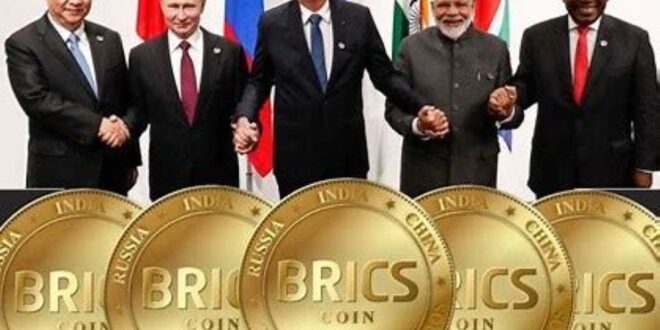The BRICS nations—Brazil, Russia, India, China, and South Africa—have long been a powerful alliance in the global economic landscape. With a shared goal of diversifying their influence and reducing dependency on Western financial systems, the BRICS nations have now taken a significant step towards reshaping the future of global trade and finance. This move comes in the form of a bold push to accelerate the transition to a new currency and implement innovative payment systems to better facilitate trade and investment among member countries.
The Shift Towards a BRICS Currency
One of the primary motivations behind this new push is the desire to decrease reliance on the U.S. dollar, which has dominated global trade for decades. The BRICS countries have long expressed concerns about the volatility and the geopolitical implications of being tied to the dollar, particularly when it comes to sanctions and economic pressures from the West.
In response, BRICS is exploring the creation of a common currency or a system that allows for smoother transactions between member countries without relying on the U.S. dollar. This move could lead to a more stable, regionalized financial structure, offering BRICS members greater control over their economic destinies and reducing the impact of external financial shocks.
Introduction of New Payment Systems
Alongside the currency shift, BRICS nations are investing heavily in the development of alternative payment systems that would support seamless trade between member countries. These new systems are designed to bypass traditional Western-controlled financial channels like SWIFT, ensuring faster, more secure, and cost-effective transactions.
By building these infrastructure tools, BRICS countries aim to foster greater financial autonomy and enable more efficient trade across borders. These systems would likely involve blockchain technology and other modern financial innovations to ensure security and transparency. The adoption of such systems could help BRICS members overcome financial barriers, such as high transaction fees and lengthy processing times, which are often a consequence of using traditional banking channels.
Potential Impact on Global Trade
The shift towards a new BRICS currency and payment system could have far-reaching implications on global trade. If successful, it could reduce the dominance of the U.S. dollar in international trade agreements, leading to a more multipolar world economy. Other countries outside of BRICS may also look to join the movement, leading to a significant reordering of global financial power structures.
The new payment systems could also promote trade within emerging markets, helping countries bypass economic sanctions, streamline cross-border transactions, and increase their participation in global commerce. This could lead to a boost in economic growth for BRICS members and foster greater economic cooperation and development across the Global South.
While the vision of a BRICS-controlled currency and payment system is bold and promising, it faces several challenges. Political differences among the BRICS nations could slow down the implementation of such systems, as each country has unique economic priorities and challenges. Additionally, establishing a robust and reliable payment system requires massive infrastructure investments, which could be a hurdle for some member nations.
Moreover, the global financial community’s resistance to such a significant shift, including the potential pushback from Western powers and institutions, is another obstacle that BRICS must overcome to ensure the success of these initiatives.
BRICS nations are taking bold strides towards transforming the global financial landscape. With the introduction of a potential common currency and advanced payment systems, they aim to reduce their reliance on the U.S. dollar and create a more balanced, self-sufficient global trade network. While challenges remain, the move could reshape the dynamics of international finance, opening doors for greater economic cooperation and paving the way for a new era of global trade.
As these plans unfold, the world will be watching closely to see how this ambitious strategy evolves and whether it can effectively challenge the existing economic order.
 Business Sandesh Indian Newspaper | Articles | Opinion Pieces | Research Studies | Findings & News | Sandesh News
Business Sandesh Indian Newspaper | Articles | Opinion Pieces | Research Studies | Findings & News | Sandesh News



